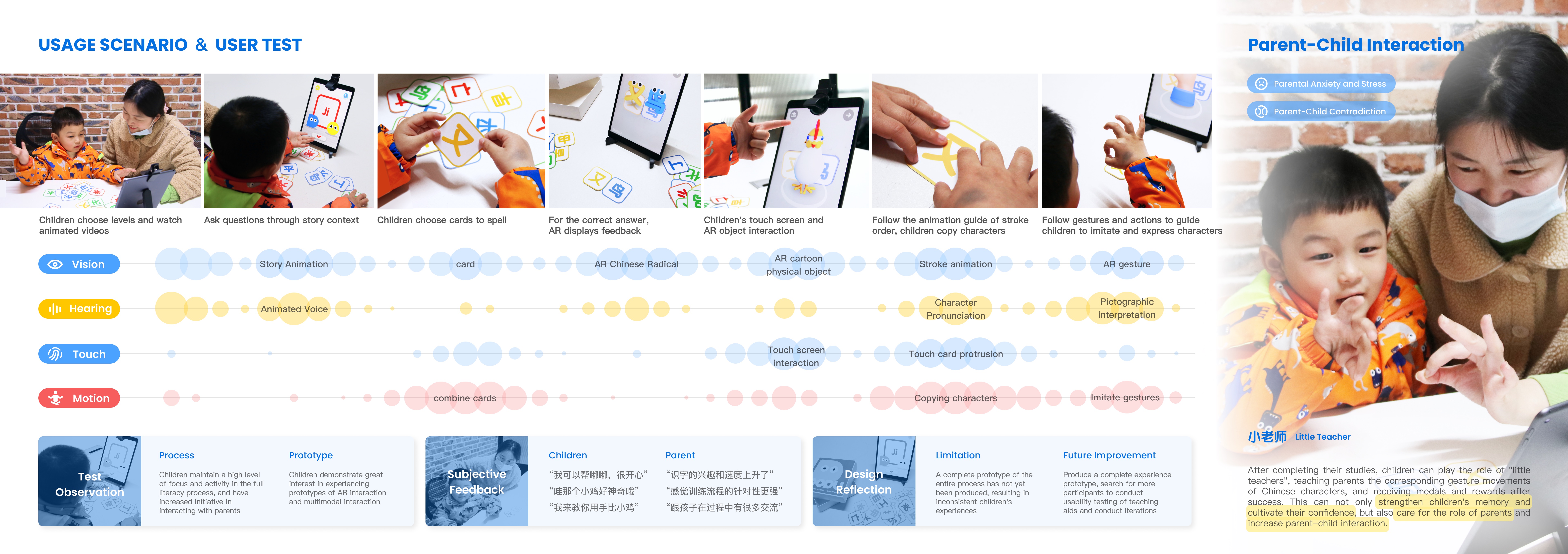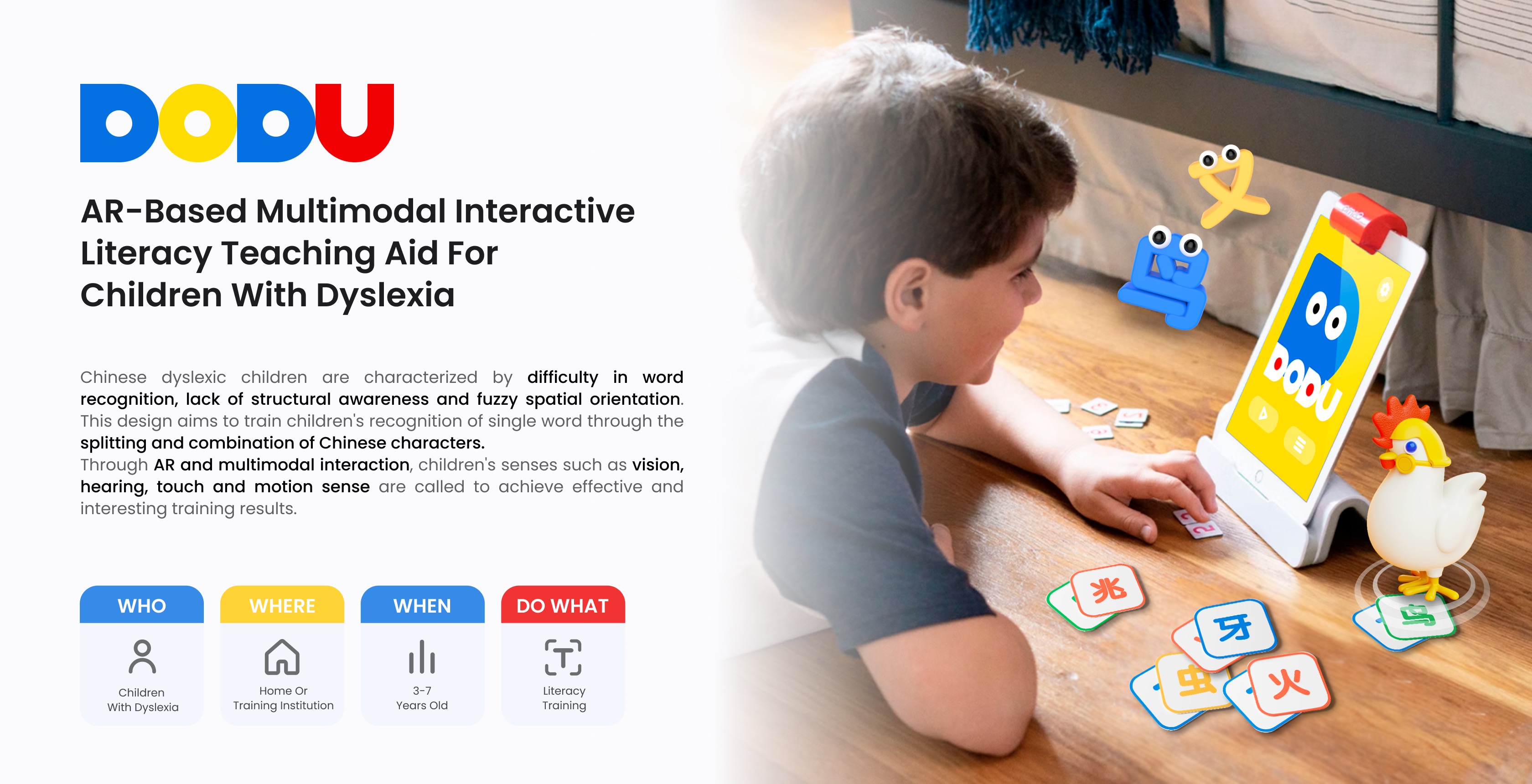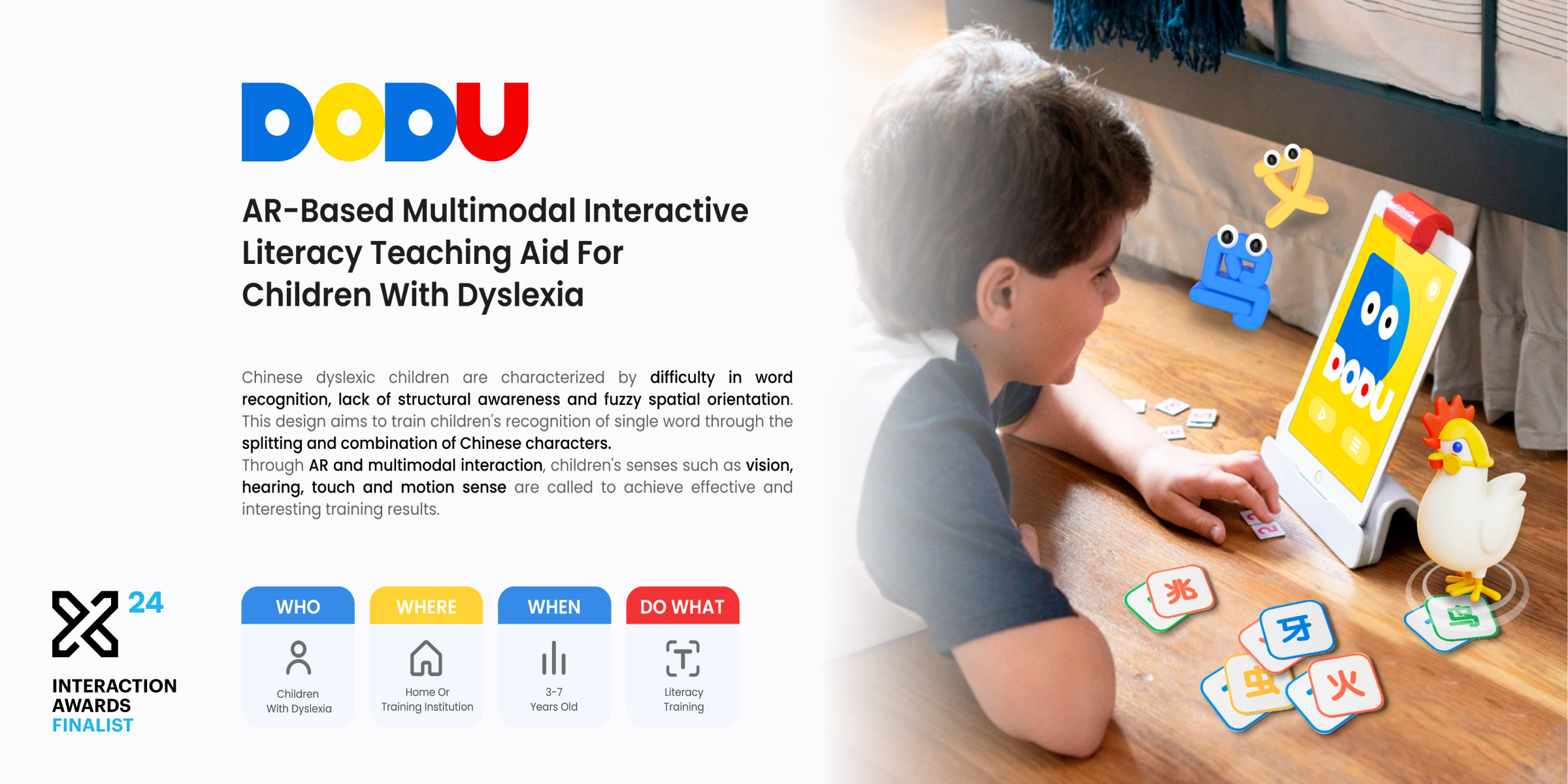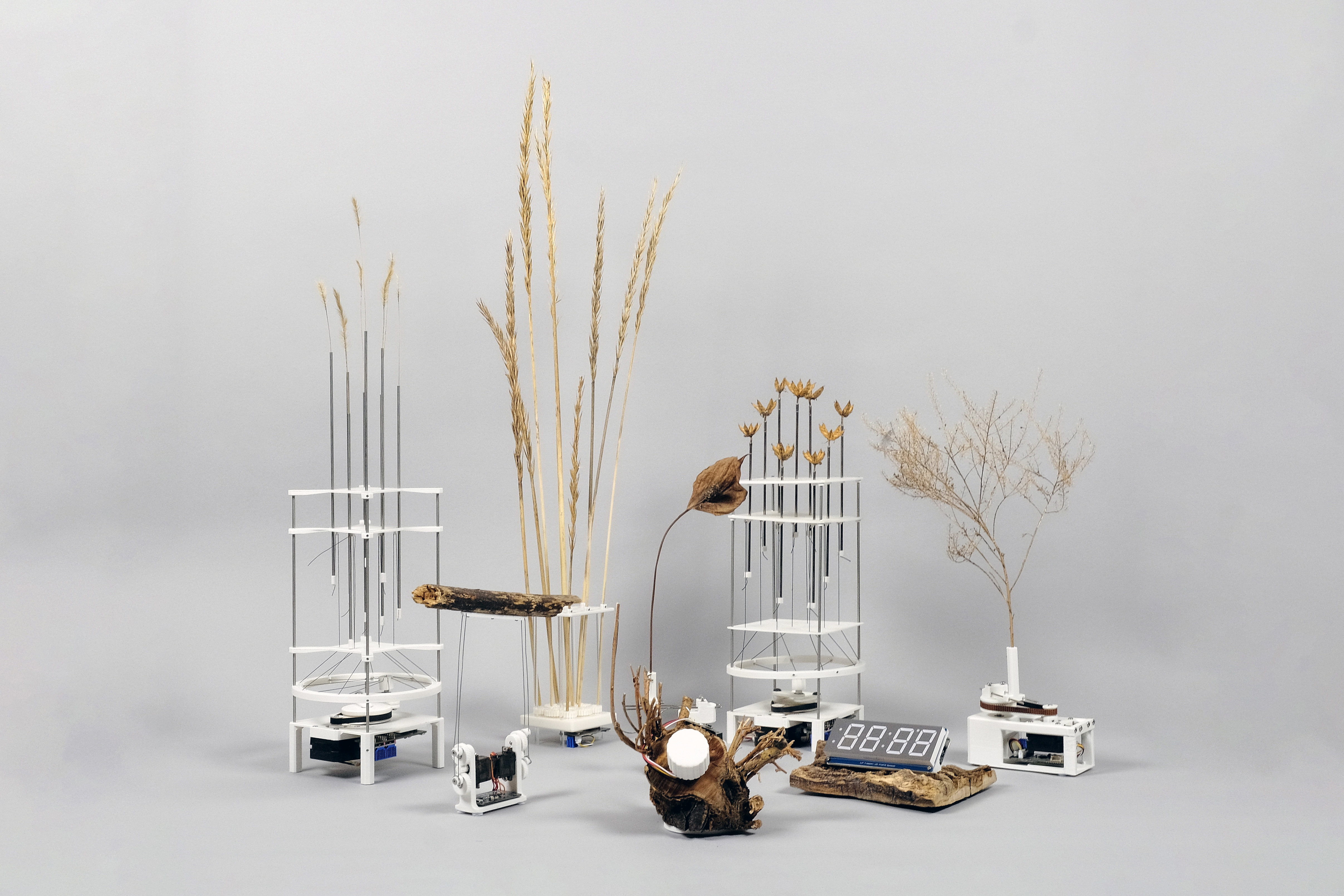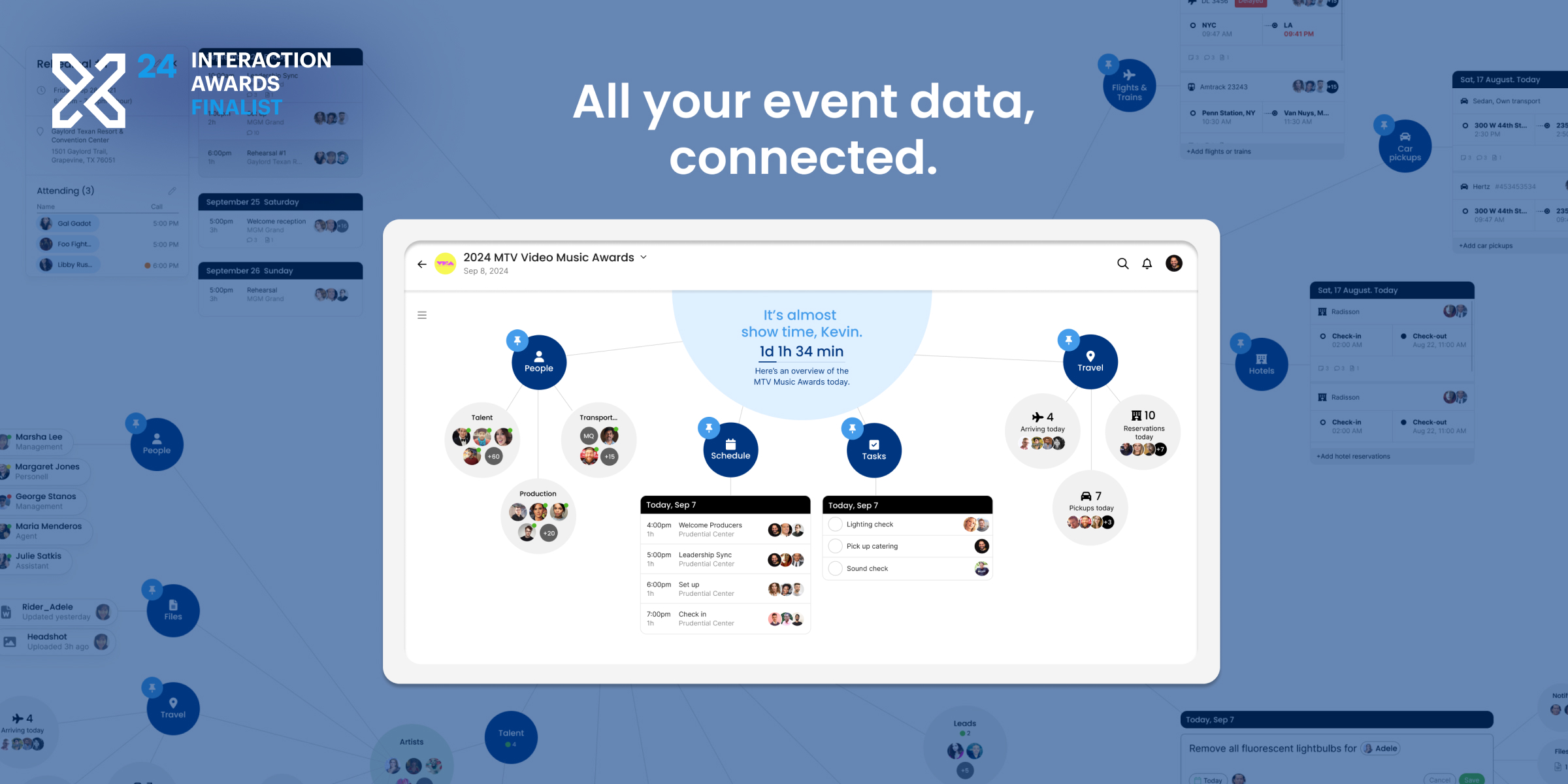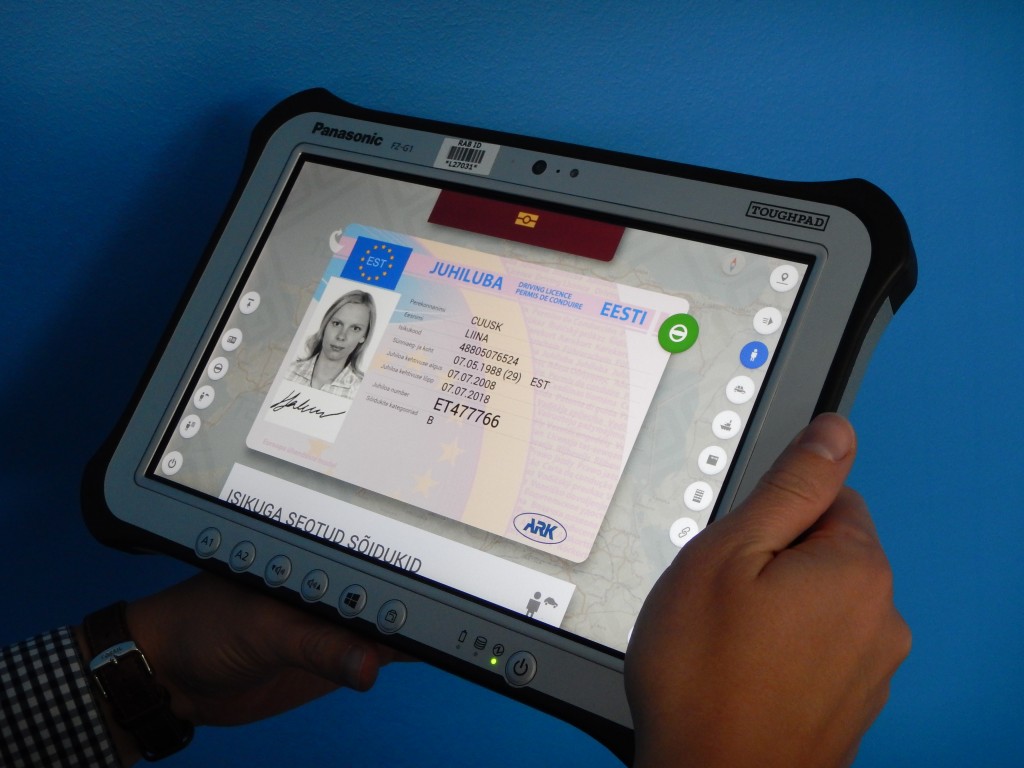DODU: An AR-based Multimodal Interactive Literacy Teaching Aid for Children with Dyslexia
Team
Company | Institution
Category
Type
Project description
DODU is an AR-based multimodal interactive literacy teaching aid for Chinese children aged 3-7 with dyslexia, which calls children's senses such as sight, hearing, touch and movement through Augmented Reality and multimodal interaction, so as to achieve effective and interesting literacy training effects.
Dyslexia is a congenital disorder of reading and spelling that is unrelated to intelligence. Currently, about 700 million people worldwide suffer from some degree of dyslexia, but the level of social awareness and attention to it is generally low. Chinese dyslexic children are characterized by difficulty in word recognition, lack of structural awareness and fuzzy spatial orientation. Nowadays, literacy training for children with dyslexia is less and generally boring.
This design studies the prominent problems of Chinese children with dyslexia and the logic of Chinese character formation, and finally determines the following three design strategies:
- Teaching from the perspective of literacy strategies to lay the foundation for children's effective reading
- Training children's structural awareness and spatial perception skills through the separation and combination of Chinese character components
- Utilizing multi-sensory teaching theory to achieve more effective and interesting training effects.
Dyslexia is a congenital disorder of reading and spelling that is unrelated to intelligence. Currently, about 700 million people worldwide suffer from some degree of dyslexia, but the level of social awareness and attention to it is generally low. Chinese dyslexic children are characterized by difficulty in word recognition, lack of structural awareness and fuzzy spatial orientation. Nowadays, literacy training for children with dyslexia is less and generally boring.
This design studies the prominent problems of Chinese children with dyslexia and the logic of Chinese character formation, and finally determines the following three design strategies:
- Teaching from the perspective of literacy strategies to lay the foundation for children's effective reading
- Training children's structural awareness and spatial perception skills through the separation and combination of Chinese character components
- Utilizing multi-sensory teaching theory to achieve more effective and interesting training effects.



